SORL 1 Gene Linked to Alzheimer’s Disease: Findings consistent across ethnic and racial groups
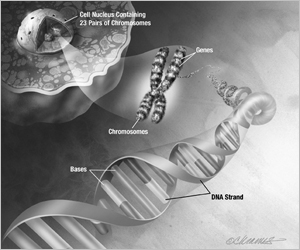 In a major international research effort, scientists have discovered new gene variants linked to late-onset Alzheimer’s disease (AD). In the February 2007 issue of Nature Genetics, researchers supported in part by the National Institute on Aging (NIA) revealed that variations in a gene known as SORL 1 may be a factor in the development of late onset AD. A finding confirming these results using data from the genome-wide association study (GWAS) was reported in the November 19, 2007 issue of NeuroReport. Scientists believe that certain variations of the SORL 1 gene may lead to the more rapid formation of amyloid plaques in the brain, a hallmark of AD.
In a major international research effort, scientists have discovered new gene variants linked to late-onset Alzheimer’s disease (AD). In the February 2007 issue of Nature Genetics, researchers supported in part by the National Institute on Aging (NIA) revealed that variations in a gene known as SORL 1 may be a factor in the development of late onset AD. A finding confirming these results using data from the genome-wide association study (GWAS) was reported in the November 19, 2007 issue of NeuroReport. Scientists believe that certain variations of the SORL 1 gene may lead to the more rapid formation of amyloid plaques in the brain, a hallmark of AD.
“We do not fully understand what causes Alzheimer’s disease, but we know that genetic factors can play a role,” says NIA director Richard J. Hodes, M.D. “Scientists have previously identified three genes, mutations that can cause early onset Alzheimer’s, and a variant of another gene that increases risk for the late onset form. The discovery of SORL 1 variants and their association with risk of AD provides a completely new genetic clue about the late onset forms of this very complex disease.”
The Nature Genetics study was led by Richard Mayeux, M.D., of Columbia University; Lindsay Farrer, Ph.D., of Boston University; and Peter St. George-Hyslop, M.D., of the University of Toronto. It also involved 14 collaborating institutions in North America, Europe, and Asia, along with independent blood donations from 6,000 individuals for genetic typing. The second study was led by Lindsay Farrer, Ph.D., of Boston University.
Mayeux and his colleagues thoroughly searched through two large data sets of genetic information from families where more than one person had AD. They found many of the subjects in these families had variations in the SORL 1 gene. The researchers then expanded their examination to genetic data sets from families of Northern European, Caribbean, Caucasian, African-American, and Israeli-Arab heritage and discovered the same association between SORL 1 variations and AD.
Farrer’s group accessed publicly available GWAS data. GWAS involves rapid scanning for markers across a complete set of DNA of a large number of people to find genetic variations related to a particular disease. Researchers again found the association between variations in SORL 1 among people with AD.
The study was “the first example of using publicly available data from a genome-wide association study to confirm the identification of a risk factor gene,” said Marcelle Morrison-Bogorad, Ph.D., director of the Neuroscience and Neuropsychology Program at NIA. “This shows the tremendous benefit of highly collaborative interaction and rapid data sharing.”
The SORL 1 gene finding could potentially lead to future clinical applications, including new treatments, as researchers explore how the variant may influence the development of the disease. Also, identifying the genes involved in AD ultimately may help determine who may be at greater risk for AD.
In addition to NIA, the study led by Mayeux, et al., was funded by NIH’s National Human Genome Research Institute, as well as by 18 other international public and private organizations. NIA supported the second study along with the Canadian Institutes of Health Research and a number of private foundations in the US, Canada, and Japan.
To learn more, go to:
http://www.nia.nih.gov/NewsAndEvents/PressReleases/PR20070114SORL1gene.htm (original study)
http://www.nia.nih.gov/NewsAndEvents/PressReleases/PR20071029SORL1.htm (confirmation study)
“Can you explain that again?” Technical Assistance Workshop Helps Decode NIH Grant Application Process
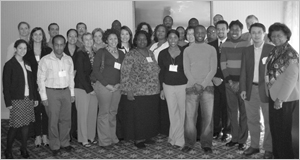 Applying for federal grants can be a difficult feat, especially if you are new to the process. That is why NIA developed its Technical Assistance Workshop on Aging Research (TAW). The two-day interactive forum is held immediately preceding the Annual Scientific Meeting of the Gerontological Society of America. It helps minority and emerging scientists and students navigate through the NIH grant application maze. Participants attend presentations about NIA, minority research, and grants, as well as have time to talk with experts in these areas. They also have an opportunity to present study proposals and receive personalized feedback from NIA program staff during a smaller breakout session. Participants are assigned to a breakout group based on where their research fits within NIA’s four extramural programs—Biology of Aging (BAP), Neuroscience and Neuropsychology of Aging (NNA), Behavioral and Social Research (BSR), and Geriatrics and Clinical Gerontology (GCG).
Applying for federal grants can be a difficult feat, especially if you are new to the process. That is why NIA developed its Technical Assistance Workshop on Aging Research (TAW). The two-day interactive forum is held immediately preceding the Annual Scientific Meeting of the Gerontological Society of America. It helps minority and emerging scientists and students navigate through the NIH grant application maze. Participants attend presentations about NIA, minority research, and grants, as well as have time to talk with experts in these areas. They also have an opportunity to present study proposals and receive personalized feedback from NIA program staff during a smaller breakout session. Participants are assigned to a breakout group based on where their research fits within NIA’s four extramural programs—Biology of Aging (BAP), Neuroscience and Neuropsychology of Aging (NNA), Behavioral and Social Research (BSR), and Geriatrics and Clinical Gerontology (GCG).
Melissa Powers, Ph.D., Assistant Professor, Department of Kinesiology & Health Studies, College of Education and Professional Studies at University of Central Oklahoma, Edmond, attended the workshop in 2007, “to learn more about NIA programs and the grant submission process and to also get feedback about [my] idea.” She was part of the GCG breakout session where she presented her research proposal on the impact of high-intensity resistance training on physical fitness among women over 75 years old. Dr. Powers says that she also valued interacting with participants from a variety of other disciplines, like sociology, neuroscience, and gerontology, during the workshop. The TAW is an excellent networking opportunity and, because participants come with different interests and backgrounds, it can help provide them a broader perspective on aging research.
Looking back on her experiences at last year’s TAW, Susan Enguidanos, M.P.H., Ph.D., Assistant Professor at Davis School of Gerontology, University of Southern California, Los Angeles, notes, “It is hard to say what aspect [of the TAW] was most beneficial. Hearing from researchers who have been funded, NIA experts, and receiving feedback on my proposal all were critical learning opportunities. The one comment from the workshop that sticks with me most is that you have a zero percent chance of getting funded if you don’t apply. My chances of obtaining funding are always going to be higher if I submit a well-rounded application using the techniques I learned at the workshop.” Enguidanos was in the BSR breakout group presenting her work on end-of-life care and frail older adults’ transition from the hospital to home.
Oge Arum, Ph.D., a postdoctoral fellow at Southern Illinois University School of Medicine, Springfield, was another 2007 TAW participant. He investigates the cellular and molecular determinants of cognitive retention with age and was part of the joint BAP-NNA breakout session. Arum says he jumped at the opportunity when he saw the TAW announcement on the NIA website and suggests other investigators do the same, “I would certainly recommend this ‘career-inspiring’ workshop to anyone in position to apply. Even young scientists very conversant with recommendations on obtaining funding and advancing one’s career will gain something of considerable value; whether unexpected or previously unknown information, ‘insider’ information on recent changes to funding mechanisms, or simply the opportunity to discuss particular matters with those who will handle one’s applications in the future.”
Please see page 8 for information about how to apply to the 2008 Technical Assistance Workshop on Aging Research.
In the Neighborhood with Dr. Irene Yen
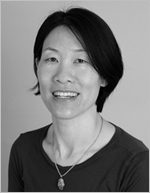 A neighborhood is a microcosm. For many people, neighborhood streets represent the boundaries where they live, shop, socialize and seek services. But a neighborhood can be more than a simple geographic place. It can influence what activities people do, where they shop and what they purchase, who they socialize with, and how much care they receive.
A neighborhood is a microcosm. For many people, neighborhood streets represent the boundaries where they live, shop, socialize and seek services. But a neighborhood can be more than a simple geographic place. It can influence what activities people do, where they shop and what they purchase, who they socialize with, and how much care they receive.
These influences are evident in the daily lives of the community; however, a neighborhood’s impact is also more profound in the long-term. Social epidemiologist Irene Yen, Ph.D., at the University of California, San Francisco (UCSF), studies the cumulative effect the neighborhood has on its residents. She is particularly intrigued with mechanisms by which the geography may dictate the health and well-being of the community. Yen started on this research path while earning her Master’s of Public Health at University of California, Berkley. There, as part of her specialization in epidemiology and biostatistics, Yen took a seminar taught by S. Leonard Syme, Ph.D., one of the first medical sociologists hired by the National Institutes of Health. Syme discussed turn-of-the-century sociologists living in Chicago who studied how urban communities developed and how they influenced people, such as immigrants. These early sociologists (who developed the “Chicago School”) observed that the neighborhood’s influence remained consistent even as its inhabitants changed. “I was fascinated by the Chicago School’s work. It motivated me to develop my own research questions about mechanisms which could connect social environment to health behaviors,” says Yen.
| | Summer Institute on Aging Research Helps... | | In 2005, Yen attended the NIA’s Summer Institute on Aging Research where she participated in a mock study section review. Yen says that the activity helped her to think like a grant reviewer. This perspective has positively influenced how she writes her proposals ever since. |
|
While earning her doctorate in epidemiology from Berkley and throughout her professional career, Yen has studied the link between neighborhoods and the health of its residents. Her investigations have examined:
- How women living in mid-sized US cities believe their neighborhood resources and hazards influence chronic disease factors
- The association between a neighborhood and the quality of life of people with asthma
- Correlating neighborhood social environment in Alameda County, California, with death rates, depression, perceived health, and physical activity of its residents.
| | Irene Yen’s Advice for Emerging Investigators | - Have a good mentor. A mentor can explain the steps to be successful. I have three mentors: Drs. S. Leonard Syme, Anita Stewart, and Nancy Adler. Syme introduced me to key epidemiological concepts and has been a constant source of guidance. Stewart is my KO1 mentor. She helps to steer me through the grant application process. Adler is a career mentor, advising me about advancement in the UCSF setting.
- Actively network. I used to be shy about contacting people to ask questions, especially because I wanted to respect their busy schedules. I’ve found, though, that most people do not mind. It’s okay to set up meetings even if you don’t have specific questions. Remember, rarely do you know what you don’t know. The most useful information I’ve gotten from many of my informational interviews was unexpected.
- Form support groups with colleagues. I am part of a women’s academic support group, inspired in part by the book, Every Other Thursday: Stories and Strategies from Successful Women Scientists. It’s not a criterion, but we all happen to be ethnic minorities. We meet monthly and are a tremendous support for each other.
|
|
Most recently, Yen has been working on “Measuring neighborhood: Key aspects for multiethnic older adults’ health status,” a study funded by NIA looking at how the neighborhood environment influences the health of older adults. She applied for this grant after completing the NIA Summer Institute. “I am attracted to aging research because the population is aging, and we know from a variety of studies that as people age they want to stay in the same place, close to home. Plus, with age, people are likely to have more health and mobility issues. So, where older adults live is increasingly more important for basic things like quality of life, food, and exercise,” explains Yen.
The study has two components. First, Yen will complete a secondary analysis of data collected from the Chicago Health and Aging Project (CHAP). CHAP, also funded by NIA, gathered demographic data on a population living in Chicago, half who were African-American and half European-American. Additionally, CHAP investigators used direct observation to collect information about shops, post offices, restaurants, gas stations, graffiti, and litter in the neighborhood. They also observed who was present in the neighborhood and what residents did while outdoors.
The second part of Yen’s work involves conducting open-ended interviews with 40 people (equal proportions African-American, Latino, Asian, and European-American) ages 65 and older living in the Bay Area. CHAP will partly inform the questions for the interview study. The interviews will cover what activities participants do and do not do in their neighborhood (i.e., banking, exercising, getting medical care, grocery shopping). She will also ask to what extent each participant is able to access the services he or she needs in the neighborhood and what obstacles are faced in the process. After identifying themes from the open-ended survey, Yen will develop a close-ended questionnaire which can be used broadly to learn how the neighborhood influences older adults’ health.
Yen’s personal and professional goal is to conduct neighborhood research in China. This interest springs from Yen’s years working for the US Centers for Disease Control and Prevention in China on a birth defects research project. She also has extended family living in China and visits as often as possible, bring her two sons, ages 7 and 5.
Dr. Harden Named Acting Deputy Director of NIA
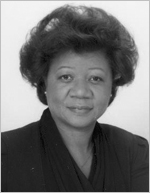 J Taylor Harden, Ph.D., R.N., F.A.A.N., is perhaps best known for her leadership role in the NIA’s efforts to address minority health and health disparities as the NIA Assistant to the Director for Special Populations. Now, Harden has accepted a new responsibility. On January 7, 2008, she was named NIA’s Acting Deputy Director. “I am very pleased to serve the NIA in this new capacity and to assist Richard J. Hodes, M.D. [NIA’s Director] to effectively carry out our mission in support of research benefitting older adults nationally and internationally,” says Harden. She will serve in this position until the new Deputy Director joins the NIA staff in October.
J Taylor Harden, Ph.D., R.N., F.A.A.N., is perhaps best known for her leadership role in the NIA’s efforts to address minority health and health disparities as the NIA Assistant to the Director for Special Populations. Now, Harden has accepted a new responsibility. On January 7, 2008, she was named NIA’s Acting Deputy Director. “I am very pleased to serve the NIA in this new capacity and to assist Richard J. Hodes, M.D. [NIA’s Director] to effectively carry out our mission in support of research benefitting older adults nationally and internationally,” says Harden. She will serve in this position until the new Deputy Director joins the NIA staff in October.
While Acting Deputy Director, Harden will continue to lead the NIA’s Minority Task Force, organize the NIA Summer Institute on Aging Research, and serve as an advisor to a wide variety of national organizations on topics including geriatric nursing and diversity. Her commitment to the needs of special populations earned her such honors as 2005 GSA Task Force on Minority Issues Outstanding Mentorship Award and NIH’s Director’s Award.
“I look forward to continuing to build networks that support NIA’s investment in fostering minority research,” Harden expresses.
NIA Launches a Spanish-Language Website for Older Adults
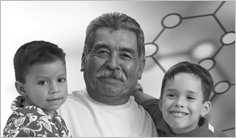 Go online and you will find a wealth of health information for older adults—in English. But do a similar search in Spanish and you will find fewer options. With the number of older Hispanic adults in the United States expected to increase from 6 percent in 2003 to 11 percent by 2030 (US Census Bureau), there is a growing need for Spanish health resources on the Internet. That is why the NIA has created a Spanish-language website: www.nia.nih.gov/Espanol.
Go online and you will find a wealth of health information for older adults—in English. But do a similar search in Spanish and you will find fewer options. With the number of older Hispanic adults in the United States expected to increase from 6 percent in 2003 to 11 percent by 2030 (US Census Bureau), there is a growing need for Spanish health resources on the Internet. That is why the NIA has created a Spanish-language website: www.nia.nih.gov/Espanol.
Like its English version, NIA’s Spanish-language website offers userfriendly, accurate, and up-to-date information on a wide range of health topics.
Features of the website include:
- Background on subjects like Alzheimer’s, cancer, and diabetes
- Tips for maintaining a healthy lifestyle and ways to choose a doctor
- Access to NIA’s free Spanish publications
- Links to other health-related Spanish-language websites, such as Medicare and MedlinePlus
“Making health information available to minority elders is a vital part of NIA’s outreach to older adults,” says J Taylor Harden, Ph.D., R.N., F.A.A.N., Acting Deputy Director and Assistant to the Director for Special Populations. “This new website is a great addition to our communication efforts.”
LET US HEAR FROM YOU!
We are always interested in hearing from minority program faculty, Summer Institute and TAW alumni, and students. Please contact us and let us know where you are and what you are doing.
Work Group on Minority Aging
Office of the Director
National Institute on Aging
Building 31, Room 5C35
Bethesda, MD 20892
Phone: 301-496-0765
Remember: July 18th Deadline for Technical Assistance Workshop
On November 20-21, 2008 NIA will hold its two-day interactive forum, the Technical Assistance Workshop for Minority and Emerging Scientists and Students. During the workshop, NIA staff and associated faculty members will present information and provide technical assistance on applying for NIA grants. Participants in the workshop, depending on career stage, will have an opportunity to make podium presentations of current or planned research projects and receive feedback from peers and NIA staff. The workshop will be held immediately prior to the 2008 Annual Scientific Meeting of Gerontological Society of America, in Washington, D.C. Participation is by competitive application.
NIA encourages applications from members of groups under-represented in aging research and investigators committed to research careers related to minority aging issues. Applicants should be preand post-doctoral students or recent recipients of Ph.D., M.D., or related doctoral degrees; new to the NIH application process and/or embarking on an independent program of research; investigators with less than fiver years of research experience; and US citizens, non-citizen nationals or permanent residents.
Applications are due by July 18. For information and application forms, please contact Dr. J Taylor Harden at 301-496-0765; HardenT@nia.nih.gov.
Links: Minority Research and Training newsletter is published twice a year by the Work Group on Minority Aging, Office of the Director, National Institute on Aging, Building 31, Room 5C35, Bethesda, MD 20892. Thanks to Megan Homer, writer/editor. This is an administrative document.
